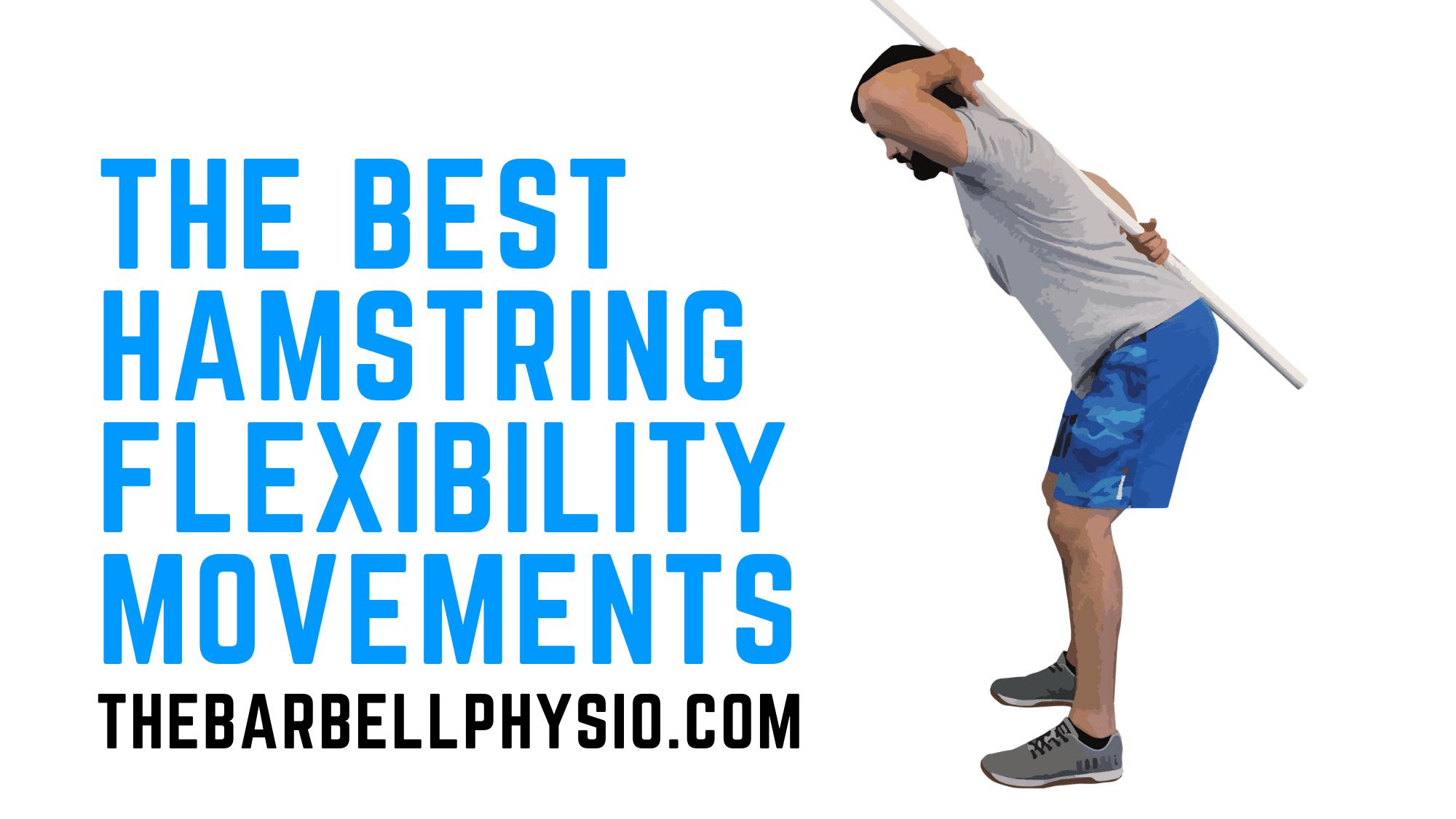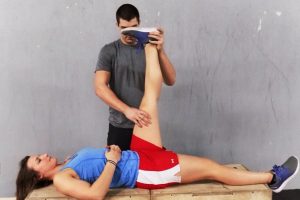Before discussing hamstring flexibility, we need to talk about testing hamstring flexibility. Many athletes believe their hamstrings are tight. But, often they have all the hamstring flexibility they need to perform all of their sporting activities. If an athlete passes the following tests, they do NOT need to work on hamstring flexibility. Unless they participate in sports requiring extreme hamstring flexibility such as yoga, pilates, and cheerleading.
So please take the time to test your hamstring flexibility rather than assuming your hamstrings are tight.
To assess hamstring flexibility, the athlete should lie supine with both legs straight. A coach or training partner should then raise one leg. While maintaining full knee extension until the athlete feels tension in the posterior thigh. Athletes with good flexibility should have an 80+ degree angle of their thigh at the stretching point. This athlete has an 80-90 degree angle of her thigh relative to the ground indicating good flexibility of the hamstring muscles. Note the hand placement of the tester, maintaining the knee in full extension.
We also need to assess an individual’s ability to utilize their available hamstring flexibility in the hip hinge pattern. This pattern forms the basis of many of the movements performed by fitness athletes and the general population in daily tasks. To assess this, read THIS ARTICLE.
The Best Exercises for Improving Hamstring Flexibility!
For more help improving your mobility, access our FREE mobility checklist!
Romanian Deadlift Eccentric Isometrics
Eccentric isometrics have long been one of my favorite ways to create mobility changes. Eccentric muscle contractions (or slowly lowering during a lift) have been shown to create lengthening inside the muscle fibers themselves. Perform a slow eccentric (3-7 seconds) Romanian Deadlift. Then, pause in the stretched position for 2-5 seconds. This makes for a great combination to improve mobility, movement control/technique, strength, and muscle hypertrophy.
With the hamstrings, my go-to drill for improving mobility is almost always eccentric isometric RDLs.
Hamstring PAILs/RAILs
PAILs/RAILs are a mobility technique involving a static stretch followed by an isometric contractions at end range. When performing static stretches, we get the nervous system to relax into new ranges of motion. The problem is, the body will easily revert to its previous levels of stiffness. By performing these isometric contractions, we can “hit save” on some of the mobility improvements we make. These work especially well with the hamstrings.
Jefferson Curls
Jefferson Curls utilize a light weight combined with a slow lower to get a deep stretch into the entire posterior chain. I typically load these very light <20lbs and do a low amount of volume.
Reverse Active Straight Leg Raises
So many athletes with hamstring tightness lack the pelvis control to actively use their hamstring flexibility. Or, as they improve their flexibility, they don’t know how to use to and move through the hips rather than moving through the spine.
The reverse active straight leg raise combines hamstring flexibility work with the athlete having to control his/her pelvic positioning. Making this a great combo for a lot of athletes.
Band Pullover Straight Leg Raises
These are similar to the reverse active leg raises in their strength and mobility combination. The band pullover straight leg raises are great to get athletes stabilizing their pelvis position before moving the hamstrings through range of motion.
PVC Hip Hinge Work
It is not enough to have good flexibility. We also want to be able to translate that to better positioning for movements like the deadlift. To train this, I often use the PVC Hip Hinge.
Sciatic Sliders
We often overlook the role of the sciatic nerve in posterior chain tightness. Often, athletes assume their hamstrings are tight when really the sciatic nerve doesn’t move freely.
Body Tempering
Body tempering is a soft of soft tissue mobilization created by legendary powerlifter Donnie Thompson. It involves rolling heavily weighted cylinders on muscles and/or joints to create a nervous system effect. Combine body tempering with active movements shown above for rapid results. Below I’m using the Forge Body Tempering Device.
View this post on Instagram







